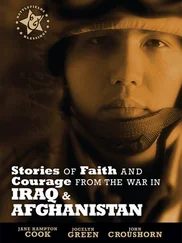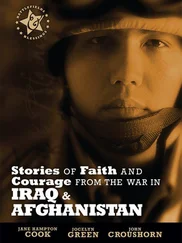When the men arrived at Camp O’Donnell the conditions were no better, as there were virtually no drinking facilities. The prisoners would stand for hours on end just waiting to get a drink, and they had to stay in the clothes they arrived in, with no facilities for washing. The basic food ration was rice, with the odd luxury of a piece of meat about 2.5 cm (1 in) square. Sometimes they were thrown pieces of rotting vegetables, but the prisoners formed guards to try and stop the more crazed men from eating the contaminated scraps. There was a black market for those who had any money, and it was possible to buy a small can of sardines for the pricely sum of $5.
There was a dilapidated old building at Camp D’Donnell, which doubled as a hospital, but the conditions were appalling and little could be done to help the suffering. There were no washing facilities which meant that the dying had to lie in their own excrement and hundreds had to lay on the bare floor without anything to cover them. The sick were forced to work until they dropped dead, and the daily death rate after just two weeks in the camp was approximately 50 Americans and 150 Filipinos.
In June, the US soldiers were moved to Cabanatuan, which was little better than O’Donnell, although there was adequate drinking water and muddy water for bathing. However, the diet did not improve and the brutality continued, with the men beaten with shovels if they didn’t work hard enough. Three officers who attempted to escape were quickly recaptured, stripped down to their underpants, their hands were tied behind them and they were hauled up by ropes. They were kept in this position, in the blazing sun, for two days, occasionally being beaten as a Japanese guard walked past. In the end, one was beheaded and the other two were shot. By October, 3,000 of the US prisoners had died.
Eventually the remaining prisoners were taken to another penal camp at Davao, Mindanao, and put to hard labout. The beatings, murder and humiliation continued and conditions were no better, but their salvation eventually came in the form of Red Cross parcels providing them with food and clothing.
Three soldiers managed to escape on 4 April, 1943, and it is through their account that we have so much evidence of the Bataan death march.
Sandakan
The story of the Sandakan death marches is one of the most tragic of World War II, but also one of the most heroic. Despite the appalling conditions, the prisoners never gave up hope, and it is their heroism and determination that are testimony to the strength of the human spirit. Of the 2,434 prisoners held at Sandakan, 1,787 were Australian and the remaining British. Out of these, only six Australians escaped to tell their story.
The Japanese army decided to build a military airfield at the port of Sandakan, on the north-eastern tip of Borneo, to protect the oilfields they had recently captured. To complete this task they shipped in Australian and British prisoners of war from Singapore and neighbouring islands. The conditions at Sandakan were appalling – water was drawn from a filthy creek, their food was a couple of handfuls of contaminated rice and sometimes a few vegetables. At first security at the camp was lax, and several prisoners managed to escape into Borneo’s steamy jungles. However, the remaining prisoners were punished by denial of food, and Japanese guards routinely shot any prisoner who attempted to escape or who was recaptured. Indiscretions, such as stealing a coconut to supplement their diet, or forgetting to bow to the guards, were treated with beatings or being locked in cages in the hot sun for hours on end.
Any prisoner who was suspected of assembling or operating an improvized radio could find himself at the mercy of the feared Kempei Tai, the Japanese military secret police. Torture methods included burning flesh with cigarettes, hammering metal tacks under the nails and force-feeding the prisoners water until their stomachs became distended. The Kempei Tai would then jump on the prisoners’ stomachs.
The arduous work on the airstrip and the appalling lack of nutrition soon started to take its toll on the prisoners, many of them becoming totally emaciated. As the sickness took hold and the work slowed down, the brutality of the Japanese heightened and the already meagre rations were further reduced. To force the men to work harder, the Japanese brought in a gang of tough guards, who became known as ‘the bashers. They carried wooden pick handles or bamboo canes and seemed to take great pleasure in beating the prisoners for no real reason. The victims were often left unconscious, with broken arms or legs.
By the beginning of 1945, only 1,900 prisoners were left at Sandakan and, as the war in the Pacific entered its final stages, the Allied prisoners were chosen to act as porters to undertake an arduous journey through the marshlands and dense jungle. This was the first of the Sandakan death marches, and only 470 prisoners were found strong enough to actually carry the supplies. The journey of 192 km (120 miles) would have been a test of endurance for even the fittest soldier, but already sick, weak and exhausted from their treatment at Sandakan, only 190 men survived the trek. Ill-equipped and severely undernourished, many of the prisoners simply collapsed from exhaustion. Those that did survive were forced to build huts for the Japanese soldiers and a temporary camp for themselves on the outskirts of Ranau, a village high on a plateau. The men were forced to carry heavy loads from Ranau back to the camp, including barrels of water from a nearby stream. Their rations were cut even further, until they only received 100 g (4 oz) a rice per day.
The second death march started on 29 March, 1945, with 536 prisoners who had been chosen because they were still able to stand without assistance. They set off in groups of about 50, with Japanese guards at the front rear and sides of each section. They had been ordered to shoot anyone who collapsed from exhaustion or attempted an escape. This march took 26 days and at the end only 183 prisoners reached Ranau. When the second group arrived at the camp at Ranau, they discovered that only six prisoners out of the original 470 who had left Sandakan were still alive. The survivors of the second march, like the men in the first one, were immediately put to work and the death toll soared.
After the second death march, there were about 250 prisoners left at Sandakan. Most of these men were so ill that the Japanese had decided to just leave them there to perish. However, on 9 June, 1945, they changed their minds and set out on a third expedition to Ranau. Only one man made it further than 50 km (30 miles), and as each one collapsed, he was shot by a Japanese guard.
By 1 August, just 38 prisoners remained alive at Ranau. The rest had died as a result of the brutality and starvation. What they thought had been an idle threat by one of the Japanese guards when they set out on their marches, turned out to be a reality. He had said that the prisoners would be killed as soon as they reached their final destination – this order was eventually carried out. A Japanese sergeant addressed the prisoners, saying, ‘There is no rice, so I’m killing the lot of you today. Is there anything you want to say?’
Out of the original 2,434 prisoners of war, only six managed to escape the Japanese guards. It happened one afternoon when a US reconnaissance plane flew low over the camp at Ranau. The Japanese guards ran for cover, which gave the men the chance to run off in the opposite direction. Despite being riddled with disease and skeletal, they found the strength to slide down a long, steep slope and hide in the brush until it became dark. For the next few days they hacked their way through the dense, humid jungle and marched towards, what they thought, was the sea. They soon discovered the secrets of surviving in the jungle by watching the animals around them. They survived on bugs, wild fruit and fish, and simply spat out anything that tasted too bitter. Unfortunately, five of the men was so weakened by malaria and beriberi they were no longer able to move and died before they could get help. One man did make it out, though, and he was rescued by fishermen who took him to a group of Australian commandos stationed close by. He was taken to a US navy ship, where he was nursed back to health.
Читать дальше












